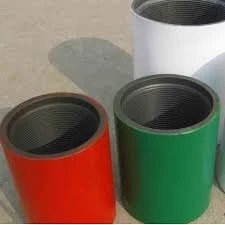- Afrikaans
- Albanian
- Amharic
- Arabic
- Armenian
- Azerbaijani
- Basque
- Belarusian
- Bengali
- Bosnian
- Bulgarian
- Catalan
- Cebuano
- Corsican
- Croatian
- Czech
- Danish
- Dutch
- English
- Esperanto
- Estonian
- Finnish
- French
- Frisian
- Galician
- Georgian
- German
- Greek
- Gujarati
- Haitian Creole
- hausa
- hawaiian
- Hebrew
- Hindi
- Miao
- Hungarian
- Icelandic
- igbo
- Indonesian
- irish
- Italian
- Japanese
- Javanese
- Kannada
- kazakh
- Khmer
- Rwandese
- Korean
- Kurdish
- Kyrgyz
- Lao
- Latin
- Latvian
- Lithuanian
- Luxembourgish
- Macedonian
- Malgashi
- Malay
- Malayalam
- Maltese
- Maori
- Marathi
- Mongolian
- Myanmar
- Nepali
- Norwegian
- Norwegian
- Occitan
- Pashto
- Persian
- Polish
- Portuguese
- Punjabi
- Romanian
- Russian
- Samoan
- Scottish Gaelic
- Serbian
- Sesotho
- Shona
- Sindhi
- Sinhala
- Slovak
- Slovenian
- Somali
- Spanish
- Sundanese
- Swahili
- Swedish
- Tagalog
- Tajik
- Tamil
- Tatar
- Telugu
- Thai
- Turkish
- Turkmen
- Ukrainian
- Urdu
- Uighur
- Uzbek
- Vietnamese
- Welsh
- Bantu
- Yiddish
- Yoruba
- Zulu
Metric Pipe Couplings for Efficient Fluid Transfer and Connection Solutions
Understanding Metric Pipe Couplings A Comprehensive Guide
In the world of plumbing and piping, the importance of quality fittings and couplings cannot be overstated. Among these, metric pipe couplings stand out due to their precision and versatility, allowing for a seamless connection between different sections of piping systems. This article aims to provide a comprehensive overview of metric pipe couplings, their types, applications, and advantages, ensuring you have a thorough understanding of this critical component in fluid transport and distribution systems.
What are Metric Pipe Couplings?
Metric pipe couplings are specialized fittings designed to connect two or more pieces of pipe in a fluid systems architecture. They are designed according to metric measurement standards, which are commonly used in various industries worldwide. The metric system provides uniformity and consistency in sizing, making it easier for engineers and technicians to work with different components across different markets.
Types of Metric Pipe Couplings
There are several types of metric pipe couplings available, each catering to specific applications and materials. Some of the most common types include
1. Straight Couplings These are used to join two straight pieces of pipe together, typically of the same diameter. They are simple yet effective and are widely utilized in various piping systems.
2. Reducing Couplings As the name suggests, reducing couplings connect pipes of different diameters. This is crucial in systems where flow rates need to be adjusted, as they allow for efficient transitions without compromising structural integrity.
3. Elbow Couplings These allow for the change of direction in a piping system. Elbow couplings come in various angles, with 45-degree and 90-degree elbows being the most common.
4. Tee Couplings Used to create a branch in the pipe system, tee couplings allow for three connections. They can direct flow in multiple directions, making them essential in complex piping layouts.
5. Socket Weld and Threaded Couplings These are used in high-pressure applications, where a secure attachment is crucial. Socket weld couplings are welded to the pipe ends, while threaded couplings are screwed together, providing a tight seal.
metric pipe couplings

Advantages of Metric Pipe Couplings
1. Standardization Utilizing metric dimensions ensures that components from different manufacturers can easily fit together. This reduces compatibility issues and facilitates easier maintenance and repairs.
2. Precision and Quality Metric pipe couplings are manufactured to high standards, ensuring precise fittings that minimize the risk of leaks and failures in the system.
3. Versatility Available in various materials (like PVC, steel, and brass), metric couplings can be ideal for diverse applications, from residential plumbing to industrial processes.
4. Ease of Installation Many metric couplings can be easily installed with minimal tools and technical expertise, which can save time and reduce labor costs.
5. Enhanced Flow Efficiency By ensuring that connections are tight and secure, these couplings help maintain optimal flow conditions within the system, which is critical for efficient operation.
Applications of Metric Pipe Couplings
Metric pipe couplings are used in a wide range of applications, including but not limited to
- Water Supply Systems Ensuring reliable connections in drinking water distribution systems. - Drainage Systems Facilitating the efficient disposal of wastewater and stormwater. - Gas Distribution Providing secure connections for natural gas and other gas lines, where safety is paramount. - Industrial Processes Used in manufacturing and processing plants for the transportation of various fluids and gases.
In conclusion, metric pipe couplings are essential components in modern piping systems, offering a multitude of benefits including compatibility, reliability, and efficiency. Understanding their types and applications empowers professionals in the plumbing and construction industries to design and maintain effective fluid transport systems. Whether you are involved in residential plumbing or large-scale industrial applications, recognizing the importance of these couplings can greatly enhance your project's success.
-
Tubing Pup Joints: Essential Components for Oil and Gas OperationsNewsJul.10,2025
-
Pup Joints: Essential Components for Reliable Drilling OperationsNewsJul.10,2025
-
Pipe Couplings: Connecting Your World EfficientlyNewsJul.10,2025
-
Mastering Oilfield Operations with Quality Tubing and CasingNewsJul.10,2025
-
High-Quality Casing Couplings for Every NeedNewsJul.10,2025
-
Boost Your Drilling Efficiency with Premium Crossover Tools & Seating NipplesNewsJul.10,2025







